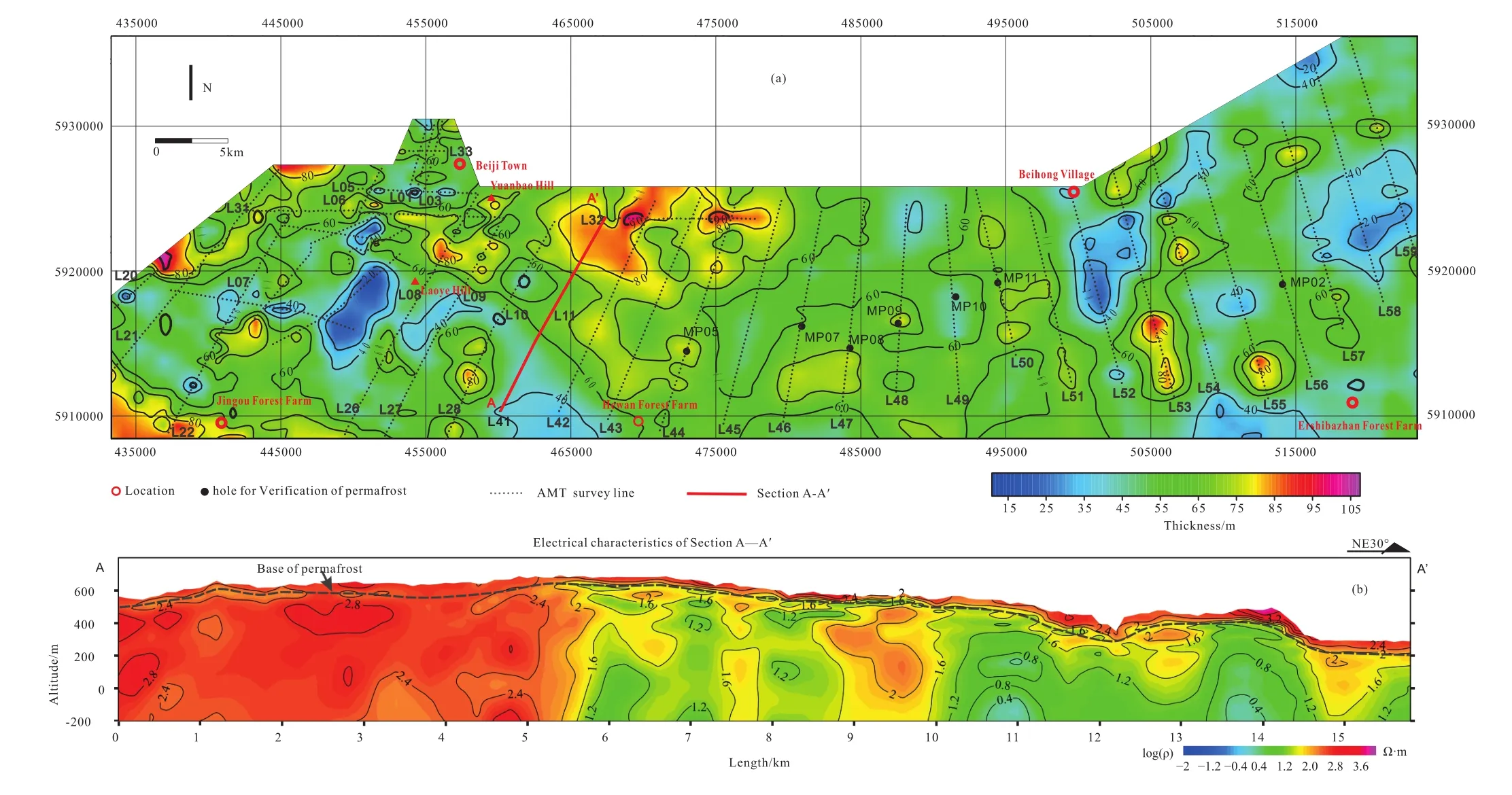New indications of gas hydrate in the northeastern China permafrost zone
Xing-min Zho, Fng-yun Song, Jin Deng, Zhu Ro, Zhi-gng Wen, Do-gong Hu, Li Yi, Chen Liu
a Oil and Gas Survey, CGS, Beijing 100083, China
b National Research Center for Geoanalysis, Beijing 100037, China
c Yangtze University, Wuhan 430100, China
d Institute of Geomechanics, CAGS, Beijing 100081, China
1. Objectives
The Mohe Basin in Heilongjiang, China has a NEE thrust nappe belt, which was assembled by the root zone, middle thrust zone and thrust front, north-south and north-east normal faults with three tectonic activities of the Middle Jurassic to Eocene, the Miocene, and the Early to Middle Pleistocene.The middle thrust zone and thrust front has a large number of folds, thrust faults, fractures and glutenites, which are the major structures of gas hydrate accumulation in the Mohe Basin.
A survey of gas hydrates in the northeastern permafrost areas is mainly focused on the Mohe Basin, which covers approximately 2.13×104km. The survey area is located at the northern end of the Greater Khingan Mountains in China with well developed permafrost. The majority of the Mohe Basin was filled with roughly 6 km thickness of the Middle Jurassic clastic formations with river-lake facies, from the bottom to the top including Xiufeng Formation, Ershierzhan Formation,Mohe Formation, and Kaikukang Formation, respectively. All the formations are the target zone of gas hydrate survey in the Mohe Basin.
In this research, a comprehensive analysis of the surveying data of gas hydrate in the Mohe permafrost are carried out to examine the details of gas hydrate accumulation in this area, such as the permafrost thickness, gas source rocks, hydrocarbons, and the gas hydrate controlling structures and so on.
2. Methods
Methods for natural gas hydrate surveys in the Mohe basin are used as following: surface geology surveys; audio magnetotelluric methods (AMT); direct current sounding;reflection seismic methods; surface geochemical surveys;drilling; and gas logging, and so on. With these methods, five shallow geological wells of gas hydrate were implemented.Except Well MK-2, with a well depth of approximately 2300 m,and Well MK-1, with a well depth of approximately 500 m,the other three wells were mainly in the 1000 m depth range(Table 1).
In this study, the permafrost thickness was determined by AMT surveying. The source rocks were investigated with surface geological surveying and drilling. Hydrocarbon gas contents were detected by field testing of the desorbed gas from the drilled cores. The gas hydrate controlling structures was mainly determined by surface surveying.
3. Results
Dark mudstone is highly developed in the Ershierzhan and Mohe Formations, in which the Mohe Formation contains more than 300 m of dark mudstones and the Ershierzhan Formation includes almost 100 m of dark mudstones (Table 1).This presents very rich gas source rock, and a major potential for the generation of the hydrocarbon gas.

Table 1. Main drilled formation data in the Mohe Basin.
The drilling results in recent years indicated that the mudstone, sandstone, and fracture zones in the Mohe basin contain considerable amounts of gases. This basin has approximately 0.14–307.55 mL/L, with an average of 36.62 mL/L of gases, in which methane are commonly 93.2% to 100%, ethane and other heavy hydrocarbon are about 0 to 6%.These hydrocarbon gases can be used for the potential gas hydrate formation in the Mohe permafrost.
The Mohe Basin has been determined to be located in a consecutive permafrost zone. As indicated in the latest survey results, the permafrost in the Mohe Basin is generally 60 m to 80 m thick (Zhao XM et al., 2011), with a maximum thickness of 100 m (Fig. 1). It is not only fairly equal to the Qilian Mountains, where gas hydrates have been found, but also similar to the Yamal Peninsula in Siberia, which isspeculated to have a large distribution of potential gas hydrates (Chuvilin EM et al., 1998; Yakushev VS et al.,2000), which can satisfy the basic requirement of gas hydrate formation in the Mohe permafrost.

Fig. 1. Thickness map of the permafrost in the central-northern Mohe Basin. (a). Permafrost thickness contour. (b). Permafrost distribution on interval A-A’.
4. Conclusion
Although gas hydrate has not been discovered in the Mohe permafrost so far, it is certain that there were the conditions for gas hydrate formation and accumulation potentials. Further, the Ershibazhan and the Longhe Forest Farms, Wusuli Ford, and their surrounding areas in the middle Mohe Basin are the better target plays for the explorations of gas hydrate in the Mohe Permafrost.
Acknowledgement
We specially acknowledge National Special Project 127(GZHL20130304, GZH201400303) for sponsoring this work,and You-hong Sun, Wei Guo, Hui Fang, Chang-wang Liu,Xiao-ping Yang, Wen-long Zhang, Li-quan Qiu, Zhong-jun Sun, Xuan Tang, Jian Song, Sai-sai Wu, and Song Li for their fieldworks. We thank Guang Wang, Youjun Tang, and Bo Xiong for their samples testing in laboratory.
- China Geology的其它文章
- New discovery of the permafrost gas hydrate accumulation in Qilian Mountain, China
- New delineation of two favorable zones for gas hydrate in southern Qinghai and northern Tibet, China
- Introduction of the International Research Centre on Global-Scale Geochemistry under the auspice of UNESCO
- Progress in China’s geological exploration in the first half year of 2018
- Discovery of the largest Carboniferous manganese deposit in Longtou-Limiao, central Guangxi, China
- Discovery of the pegmatite lithium veins with predicted super-large size resources in the Sizemuzu district of the Keeryin, China

